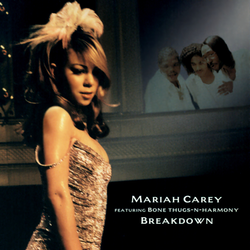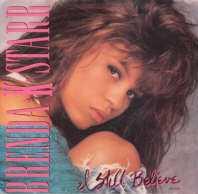Alternative Airplay is a music chart published in the American magazine Billboard since September 10, 1988. It ranks the 40 most-played songs on alternative and modern rock radio stations. Introduced as Modern Rock Tracks, the chart served as a companion to the Mainstream Rock chart, and its creation was prompted by the explosion of alternative music on American radio in the late 1980s. During the first several years of the chart, it regularly featured music that did not receive commercial radio airplay anywhere but on a few modern rock and college rock radio stations. This included many electronic and post-punk artists. Gradually, as alternative rock became more mainstream, alternative and mainstream rock radio stations began playing many of the same songs. By the late 2000s, the genres became more fully differentiated with only limited crossover. The Alternative Airplay chart features more alternative rock, indie pop, and pop punk artists while the Mainstream Rock chart leans towards more guitar-tinged blues rock, hard rock, and heavy metal.

You Can Dance is the first remix album by American singer and songwriter Madonna. It was released on November 17, 1987, by Sire Records. The album contains remixes of tracks from her first three studio albums—Madonna (1983), Like a Virgin (1984) and True Blue (1986)—and a new track, "Spotlight". In the 1980s, remixing was still a new concept. The mixes on You Can Dance exhibited a number of typical mixing techniques. Instrumental passages were lengthened to increase the time for dancing and vocal phrases were repeated and subjected to multiple echoes. The album cover denoted Madonna's continuous fascination with Hispanic culture.
The Billboard charts tabulate the relative weekly popularity of songs and albums in the United States and elsewhere. The results are published in Billboard magazine. Billboard biz, the online extension of the Billboard charts, provides additional weekly charts, as well as year-end charts. The two most important charts are the Billboard Hot 100 for songs and Billboard 200 for albums, and other charts may be dedicated to a specific genre such as R&B, country, or rock, or they may cover all genres. The charts can be ranked according to sales, streams, or airplay, and for main song charts such as the Hot 100 song chart, all three data are used to compile the charts. For the Billboard 200 album chart, streams and track sales are included in addition to album sales.

"Escapade" is a song by American singer Janet Jackson from her fourth studio album, Janet Jackson's Rhythm Nation 1814 (1989). It was written and produced by Jackson and Jimmy Jam and Terry Lewis. The song was released on January 8, 1990, by A&M Records as the third single from Janet Jackson's Rhythm Nation 1814 (1989). "Escapade" became the third of the historic seven top-five singles released from the Rhythm Nation 1814 album, reaching number one on the US Billboard Hot 100.

"Crybaby" is a song by American singer and songwriter Mariah Carey featuring American rapper Snoop Dogg. It was released on April 17, 2000 by Columbia Records as a double A-side with "Can't Take That Away ". It was written by Carey and Snoop Dogg, and produced by the former and Damizza for Carey's seventh studio album, Rainbow (1999). It serves as the album's third single. It features Snoop Dogg throughout the song's bridge and is built around a sample of the 1988 song "Piece of My Love," originally performed by Guy and written by Teddy Riley, Aaron Hall, Timmy Gatling and Gene Griffin. Throughout the song, the protagonist reveals the struggles of dealing with insomnia and thoughts of a past relationship during the night, as she spirals out of control and declares "I gotta get me some sleep."

"Forever" is a rock and roll and pop song recorded by American singer Mariah Carey for her fifth studio album, Daydream (1995). Columbia Records released it to American radio stations for airplay on June 18, 1996, as the album's fifth single. The lyrics, written by Carey, are about one's continued affection despite the end of a romantic relationship. She composed the music and produced the song with Walter Afanasieff. Described by critics as referencing American music of the 1950s and 1960s, "Forever" is a doo-wop-influenced sentimental ballad in the form of a waltz. Its composition includes keyboards, guitars, and programming.
"Sweetheart" is a song originally recorded by American singer Rainy Davis. It was written by Davis and Pete Warner, and produced with Dorothy Kessler. The track was released in 1986 by independent record label SuperTronics as a single from Davis's 1987 studio album Sweetheart. A freestyle, hip hop pop, and synth-funk song, "Sweetheart" appeared on R&B and dance music-based record charts in the United States.

"Breakdown" is a song recorded by American singer Mariah Carey for her sixth studio album, Butterfly (1997). In the lyrics, she describes the aftermath of a partner ending their love for the other and the trouble of hiding the pain it caused. The track features rapping by Krayzie Bone and Wish Bone, members of the group Bone Thugs-n-Harmony. Before they wrote and performed their raps, Carey composed the music with Stevie J and penned her lyrics. The latter pair produced "Breakdown" with Sean "Puffy" Combs. An R&B, hip hop, and hip hop soul song, "Breakdown" features keyboards, synthesized drums, and background vocals prominently. Columbia Records released it to American rhythmic contemporary radio stations in January 1998 as the third single from Butterfly.

"I Don't Wanna Cry" is a song recorded by American singer Mariah Carey for her first album Mariah Carey (1990). Written by Carey and producer Narada Michael Walden, Columbia Records released it as the album's fourth single in March 1991. A Latin soul–influenced pop ballad, the torch song describes the end of romance. It features drums, guitars, digital synthesizers, and a classic song structure with highly delineated section roles. Modulations occur between these segments that emphasize the singer's emotions. Varying from whispering to belting, Carey's vocal range spans more than two octaves.

"Love Takes Time" is a song recorded by American singer Mariah Carey for her eponymous debut studio album (1990). Written by Carey and Ben Margulies, while produced by Walter Afanasieff, the song was released as the second single from the album on August 22, 1990, by Columbia Records. An adult contemporary-influenced ballad, the song follows its protagonist lamenting the loss of a lover and confesses that "love takes time" to heal and that her feelings for her ex-lover remain.

"My All" is a song by American singer-songwriter Mariah Carey from her sixth studio album, Butterfly (1997). It was released as the album's fifth single overall and second commercial single on April 21, 1998, by Columbia Records. The song was written and produced by Carey and Walter Afanasieff. "My All" is built around Latin guitar chord melodies, and makes subtle use of Latin percussion throughout the first chorus, before taking on a more conventional R&B-style beat. Carey was inspired to write the song and use Latin inspired melodies after a trip to Puerto Rico, where she was influenced by the culture. The song's lyrics tell of a lonely woman declaring she would give "her all" to have just one more night with her estranged lover. It is the first song Carey wrote for the Butterfly album.
The Radio Songs chart is released weekly by Billboard magazine and measures the airplay of songs being played on radio stations throughout the United States across all musical genres. It is one of the three components, along with sales and streaming activity, that determine the chart positions of songs on the Billboard Hot 100.
The European Hot 100 Singles was compiled by Billboard and Music & Media magazine from March 1984 until December 2010. The chart was based on national singles sales charts in 17 European countries: Austria, Belgium, Denmark, Finland, France, Germany, Greece, Hungary, Ireland, Italy, Netherlands, Norway, Portugal, Spain, Sweden, Switzerland, and the United Kingdom.

"Spotlight" is a song by American singer Madonna from her first remix album You Can Dance (1987). It was released as a single in Japan on April 25, 1988 by Sire Records and Warner-Pioneer Japan. Initially rejected during her True Blue album recording sessions, the song was written by Madonna, Stephen Bray and Curtis Hudson who had presented the original to the singer. The song was remixed by John "Jellybean" Benitez.
Linked here are Billboard magazine's number-one rhythm and blues hits. The Billboard R&B chart is today known as the Hot R&B/Hip-Hop Songs chart.

"I Still Believe" is a song written and composed by Antonina Armato and Giuseppe Cantarelli, and originally recorded by pop singer Brenda K. Starr for her eponymous second studio album, Brenda K. Starr (1987). It is a ballad in which the singer is confident she and her former boyfriend will be together again one day. It is Starr's biggest hit in the United States, reaching the top-twenty on the Billboard Hot 100 and being considered her signature song. "I Still Believe" was covered by American singer Mariah Carey, a former backup singer for Starr before she achieved success, for her #1's album in 1998 and released as a single in 1999. It was also recorded by Cantopop singer Sandy Lam in 1989.
The Rhythmic chart is an airplay chart published weekly by Billboard magazine.
Country Airplay is a chart published weekly by Billboard magazine in the United States since October 20, 2012, although the magazine also retrospectively recognizes the Hot Country Songs charts from January 20, 1990, through October 13, 2012, as part of the history of the Country Airplay listing. The chart lists the 60 most-listened-to records played on 150 mainstream country radio stations across the country as monitored by Nielsen BDS, weighted to each station's Nielsen ratings.














